Beneath the windswept soil of Gotland, Sweden, archaeologists unearthed a haunting reminder of one of the Middle Ages’ bloodiest days — a warrior’s skull fused with his chainmail, preserved as if time itself refused to let him be forgotten. This chilling relic, born of fire, steel, and sacrifice, tells the silent story of the Battle of Visby (1361) — a clash that changed the fate of Scandinavia and left behind one of history’s most extraordinary mass graves.
The Calm Before the Storm

It was the summer of 1361 when Danish King Valdemar Atterdag set his sights on Gotland, the jewel of the Baltic Sea. The island was rich — a hub for merchants, craftspeople, and members of the Hanseatic League. But for all its wealth, it was woefully unprepared for war.
When the Danish fleet appeared on the horizon, shimmering like silver on the waves, the farmers and townsmen of Gotland hastily armed themselves. They were not soldiers — they were blacksmiths, fishermen, and tradesmen wielding whatever weapons they could find.
The stage was set just outside the city walls of Visby, where the fertile plains would soon run red.
The Clash at Visby
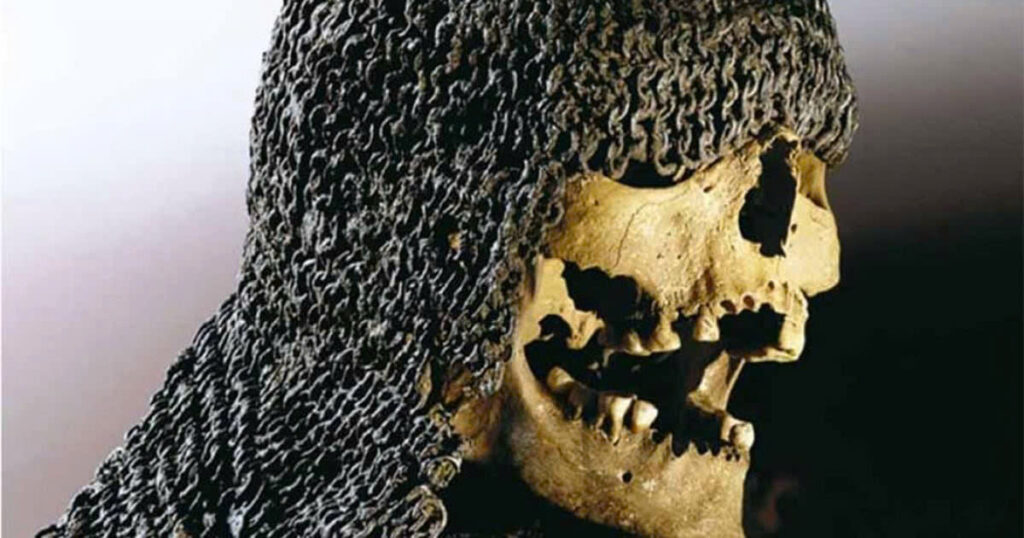
Under the searing July sun, the two forces met. The Danish army, disciplined and clad in plate and mail, advanced in brutal formation. The Gotlanders, though brave, were outmatched.
Eyewitness accounts describe the chaos — the thunder of hooves, the hiss of arrows, and the deafening ring of metal against metal. Shields splintered. Spears snapped. The air filled with the cries of the wounded.
Among the defenders stood one nameless warrior — his body wrapped in a mail hauberk, his face hidden behind an iron coif. When the final charge came, he held his ground. But a single, devastating strike — perhaps from a sword or war hammer — met his skull. The blow was so fierce it embedded his chainmail deep into the bone.
He fell there, among hundreds of others, as the Danish banners rose in victory.
The Aftermath
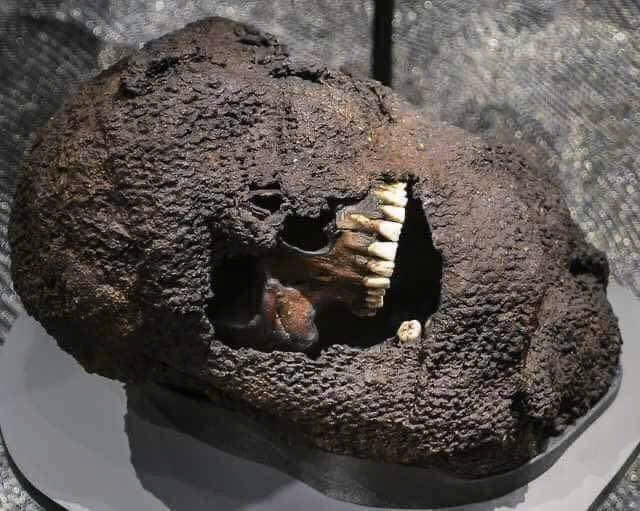
When the battle was over, Visby’s fields were littered with the dead — 1,800 bodies, historians say, left under the sweltering sun for days before burial. Most still wore their armor, suggesting the townsfolk were too overwhelmed to strip the fallen before laying them to rest.
For centuries, the battle faded into the pages of history, remembered only in chronicles. Until the 20th century, when excavations near Visby uncovered a sight that stunned even seasoned archaeologists — mass graves filled with remarkably preserved warriors.
The most haunting of all was the skull fused with chainmail — an image so visceral that it became a symbol of the battle itself. The mail links, driven into the bone, bore silent witness to the violence of that day.
What the Dead Revealed
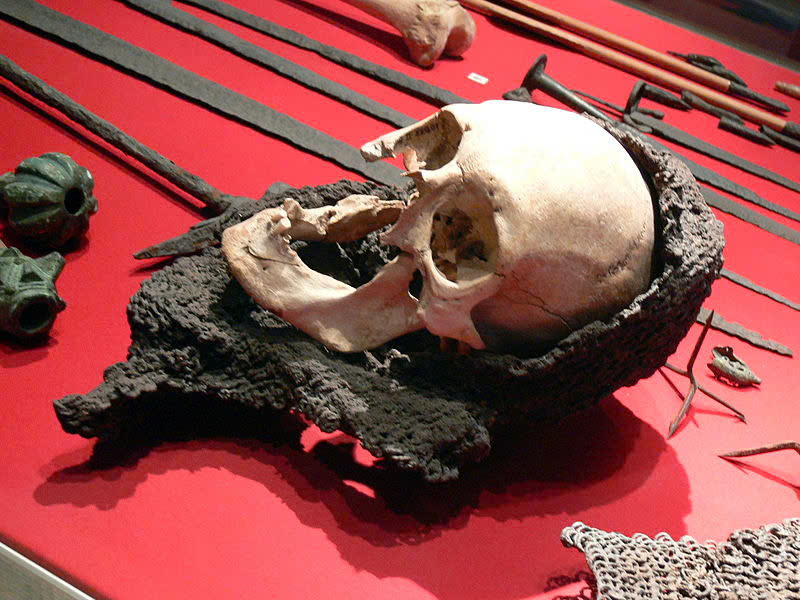
Forensic analysis of the remains painted a vivid picture. The defenders were not professional soldiers; many bore no heraldic emblems or standardized gear. Their wounds told stories — deep cuts to the legs and arms, broken ribs, crushed skulls. The Danish knights had struck with precision, targeting unarmored limbs to disable before delivering the final blow.
And yet, even in death, the defenders’ courage was evident. Some skeletons showed signs of multiple healed injuries — proof that these men had survived earlier battles or raids. They were farmers turned fighters, and their sacrifice became the tragic heart of Gotland’s story.
The Legacy of Visby

The Battle of Visby marked a turning point in Northern Europe. Gotland fell under Danish control, altering trade routes and power balances for decades to come. But its true legacy lies beneath the soil — in the preserved armor, weapons, and bones that remain among the most valuable archaeological finds of medieval warfare.
The fused skull and chainmail now rest in Sweden’s Gotland Museum, a solemn centerpiece of the Visby collection. Visitors stand before it in silence, confronted not just by death, but by devotion — the will of a man who fought until his final breath.
Echoes Across Time

The soldier’s story is not written in ink but in iron and bone. His armor failed to save him, but in that failure, it preserved him — transforming him into a timeless monument of courage and loss.
The Battle of Visby is more than a tale of conquest. It is a mirror reflecting the resilience of ordinary people thrust into extraordinary circumstances. And through one warrior’s broken mail and fractured skull, we glimpse the eternal truth of war — that behind every statistic lies a human soul, brave enough to stand and fall for what they loved.
Sources:
- National Geographic – “The Forgotten Dead of Visby”
- Smithsonian Magazine – “Medieval Mass Graves Reveal the Brutality of Battle”
- Archaeology.org – “The Battle of Visby: A Study in Bones and Armor”
- BBC History – “Visby 1361: When Farmers Faced Knights”
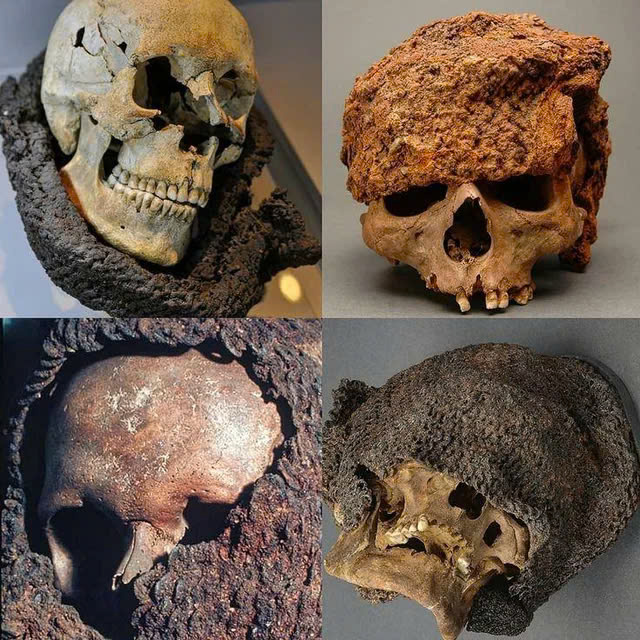


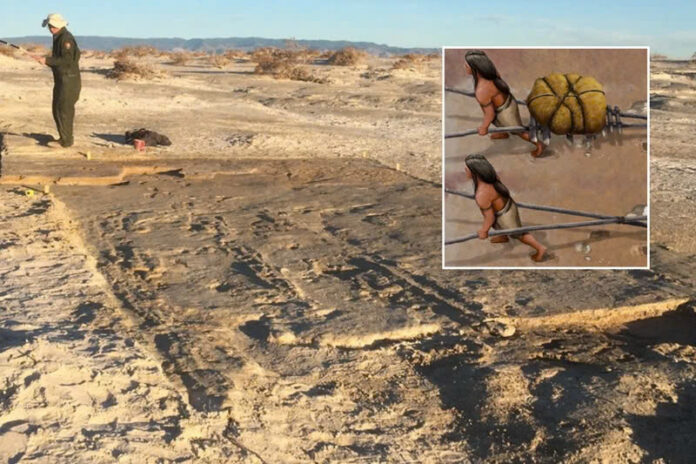

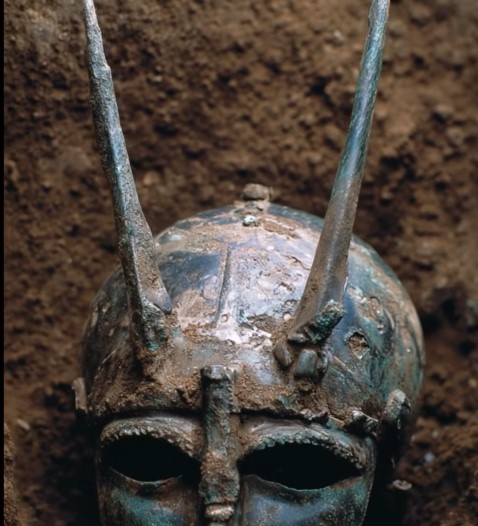

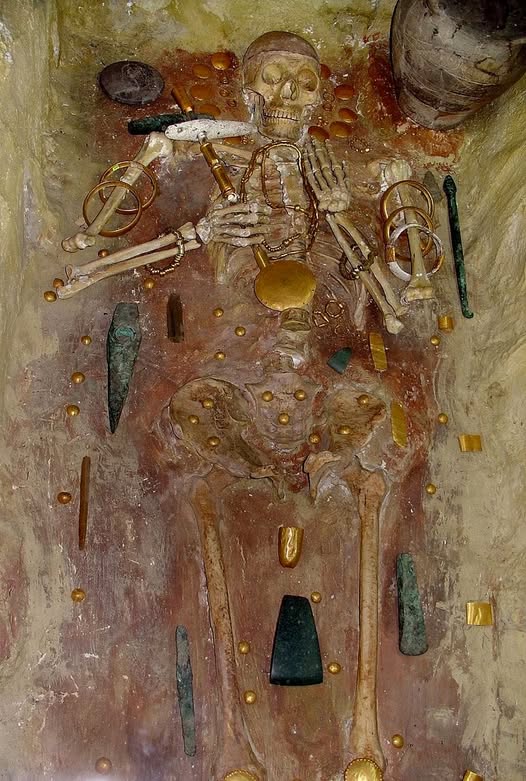

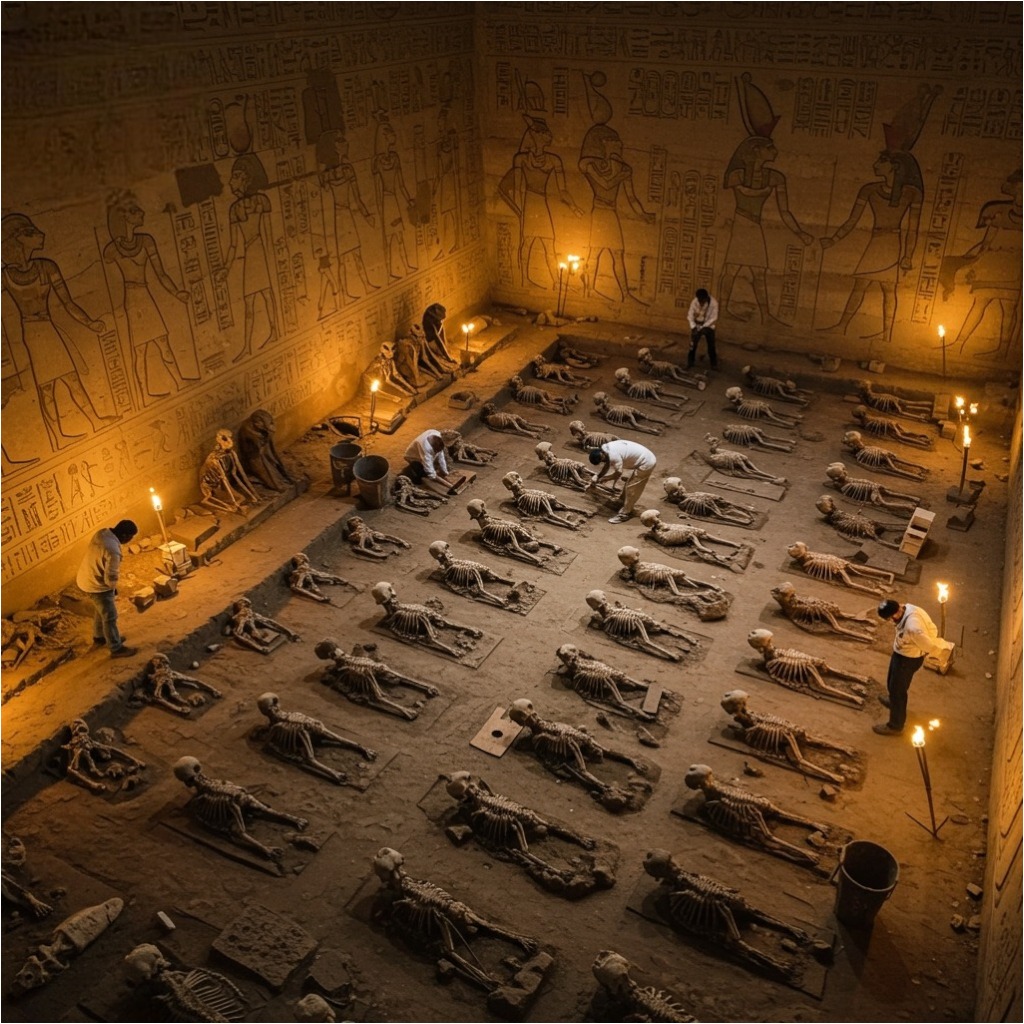


Leave a Reply